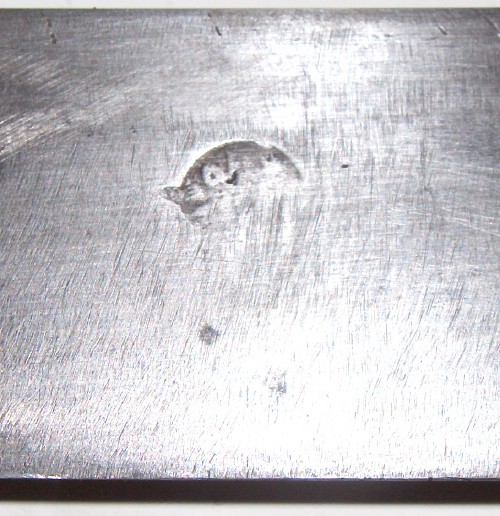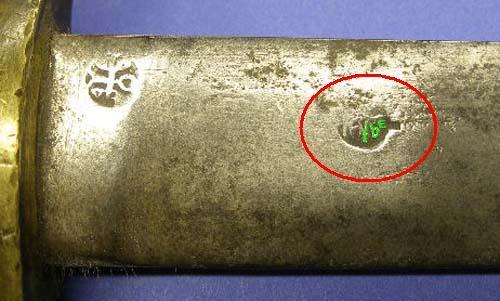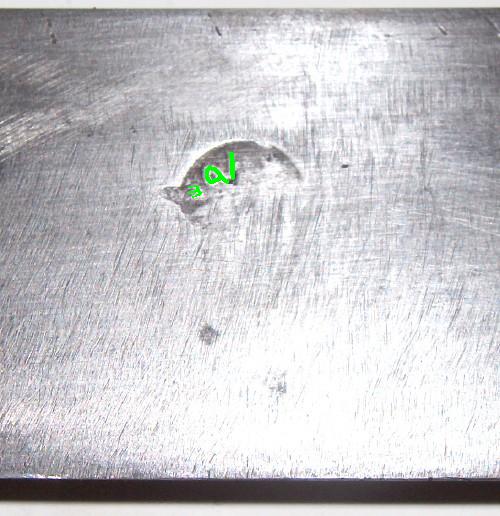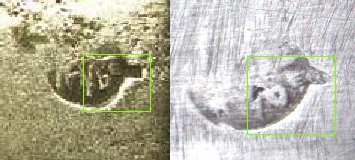First up is a sword with a blade that I am fairly certain is not a phoney - it bears legitimate Chatellerault markings on the back of the blade, and has a proof mark on the ricasso which matches the year indicated on the back of the blade. The hilt arrangement though is quite unique. The sword is a hanger / briquette / falchion shape, with a rather wide fuller along both sides, but rather than a D shaped / stirrup hilt as I would have expected on this blade, it has a rather plain circular brass guard, then a horn (or fake horn) grip. The length is 24" overall, with a blade of 18.5" There had been a brass cap on the end of the grip that had been held in place with some crumbly white glue/plaster, but the sword was knocked off its display and this cracked the "glue" loose. Just inside where the pommel cap had been, the end of the square tang is just visible. Aside from the manufactory and proof markings, the blade bears an engraved anchor on either side, just below the ricasso. My question is, does this hilt arrangement appear legitimate? Might it be a case of a military sword being converted into a hunting sword, or does this look more like a mash-up job?
My other question relates to the edges and sharpness of swords of this type and era. The second picture shows a trio of 19th century military sidearm swords. From left to right they are:
1. Alledged to be a Wagon Driver's sidearm, thought to be English. (Marked with a D on the guard) Length overall: 28", Blade: 21.5"
2. A typical naval cutlass / hangar / briquette, also thought to be English. (Marked B&W on the ricasso) Length overall: 30.5", Blade: 24"
3. A Prussian Infantry Sidearm, pattern M1852. (Very thoroughly marked & researched, dated 1870) Length overall: 24", Blade: 18.5"
The second question is, none of these swords are sharp - why not? They are pointy - if you got jabbed with one it would smart - but the edges are dull dull dull, in some cases almost 1mm thick. Did they not bother sharpening them because they were only for show? Or could they have been dulled later, like decomissioned and dulled? That doesn't seem likely to me that all of them would have this happen. Or - is it possible that previous owners in Europe had them dulled due to modern restrictions? In the case of the "B&W" cutlass, this does look plausible - the geometry / profile of the blade looks to me that it could be 'wider', i.e. that a few mm where the edge would be could have been shaved off. The other two, though, look like they simply were never meant to be sharp. Ditto the Chatellerault blade, it looks like it has never been sharpened.
I have a fifth sword of this era, which is sharp. Not as sharp as an Albion or ATrim, but sharp. I received it in worse-condition than any of the four pictured below. It just puzzles me that out of five 19th century military swords, only one should be sharp. One last comment, I acquired all of these between 4 and 6 years ago, from various sources - Canada, USA, Europe.
Thanks!
Edited to add: Sorry, the pics came out in the wrong order!
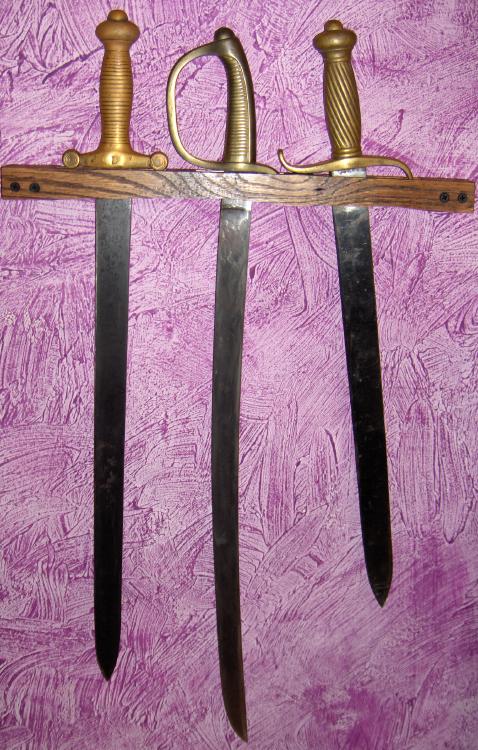
Three 19th century military sidearm swords
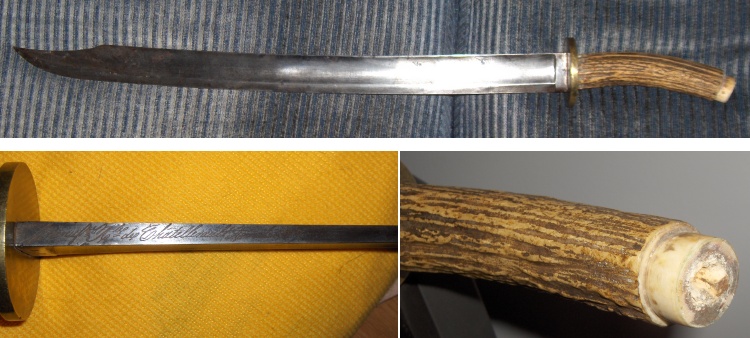
Manufre. Rle de Chatellerault Avril 1847

